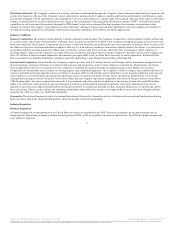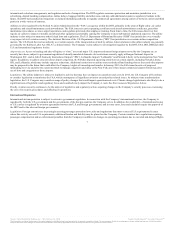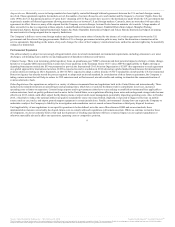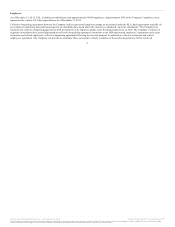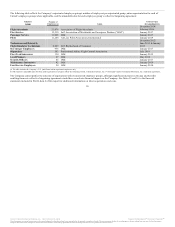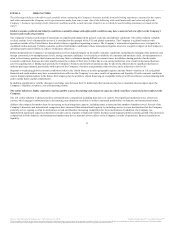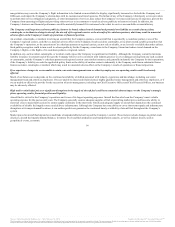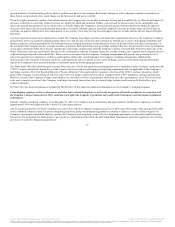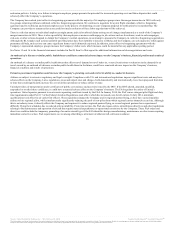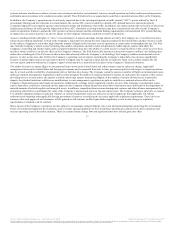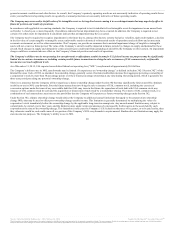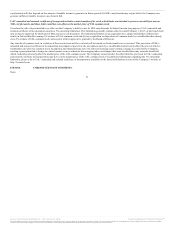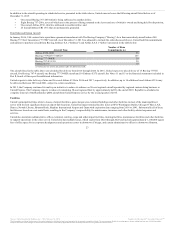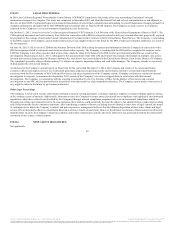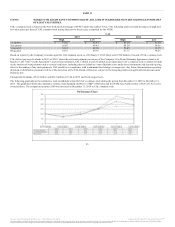United Airlines 2015 Annual Report Download - page 17
Download and view the complete annual report
Please find page 17 of the 2015 United Airlines annual report below. You can navigate through the pages in the report by either clicking on the pages listed below, or by using the keyword search tool below to find specific information within the annual report.
and union policies. A delay in or failure to integrate employee groups presents the potential for increased operating costs and labor disputes that could
adversely affect the Company’s operations.
The Company has reached joint collective bargaining agreements with the majority of its employee groups since the merger transaction in 2010 with only
two groups remaining without combined collective bargaining agreements. We continue to negotiate for a joint flight attendant collective bargaining
agreement and its technician and related employees are in the process of submitting a recent Company proposal for ratification by its membership. The
Company can provide no assurance that a successful or timely resolution of these labor negotiations will be achieved.
There is a risk that unions or individual employees might pursue judicial or arbitral claims arising out of changes implemented as a result of the Company’s
merger transaction in 2010. There is also a possibility that employees or unions could engage in job actions such as slowdowns, work-to-rule campaigns,
sick-outs or other actions designed to disrupt the Company’s normal operations, in an attempt to pressure the Company in collective bargaining negotiations.
Although the RLA makes such actions unlawful until the parties have been lawfully released to self-help, and the Company can seek injunctive relief against
premature self-help, such actions can cause significant harm even if ultimately enjoined. In addition, joint collective bargaining agreements with the
Company’s represented employee groups increase the Company’s labor costs, which increase could be material for any applicable reporting period.
See Notes 15 and 16 to the financial statements included in Part II, Item 8 of this report for additional information on labor negotiations and costs.
An outbreak of a disease or similar public health threat could have a material adverse impact on the Company’s business, financial position and results of
operations.
An outbreak of a disease or similar public health threat that affects travel demand or travel behavior, or travel restrictions or reduction in the demand for air
travel caused by an outbreak of a disease or similar public health threat in the future, could have a material adverse impact on the Company’s business,
financial condition and results of operations.
Extensive government regulation could increase the Company’s operating costs and restrict its ability to conduct its business.
Airlines are subject to extensive regulatory and legal oversight. Compliance with U.S. and international regulations imposes significant costs and may have
adverse effects on the Company. Laws, regulations, taxes and airport rates and charges, both domestically and internationally, have been proposed from time
to time that could significantly increase the cost of airline operations or reduce airline revenue.
United provides air transportation under certificates of public convenience and necessity issued by the DOT. If the DOT altered, amended, modified,
suspended or revoked these certificates, it could have a material adverse effect on the Company’s business. The FAA regulates the safety of United’s
operations. United operates pursuant to an air carrier operating certificate issued by the FAA. In January 2014, the FAA’s more stringent pilot flight and duty
time requirements under Part 117 of the Federal Aviation Regulations took effect, which has increased costs for all carriers. In July 2014, minimum
qualifications took effect for air carrier first officers. These regulations impact the Company and its regional partner flying, as they have caused mainline
airlines to hire regional pilots, while simultaneously significantly reducing the pool of new pilots from which regional carriers themselves can hire. Although
this is an industry issue, it directly affects the Company and requires it to reduce regional partner flying, as several regional partners have experienced
difficulty flying their schedules due to reduced pilot availability. From time to time, the FAA also issues orders, airworthiness directives and other regulations
relating to the maintenance and operation of aircraft that require material expenditures or operational restrictions by the Company. These FAA orders and
directives could include the temporary grounding of an entire aircraft type if the FAA identifies design, manufacturing, maintenance or other issues requiring
immediate corrective action. FAA requirements cover, among other things, retirement of older aircraft, collision avoidance
16
Source: United Continental Holdings, Inc., 10-K, February 18, 2016 Powered by Morningstar® Document Research℠
The information contained herein may not be copied, adapted or distributed and is not warranted to be accurate, complete or timely. The user assumes all risks for any damages or losses arising from any use of this information,
except to the extent such damages or losses cannot be limited or excluded by applicable law. Past financial performance is no guarantee of future results.


